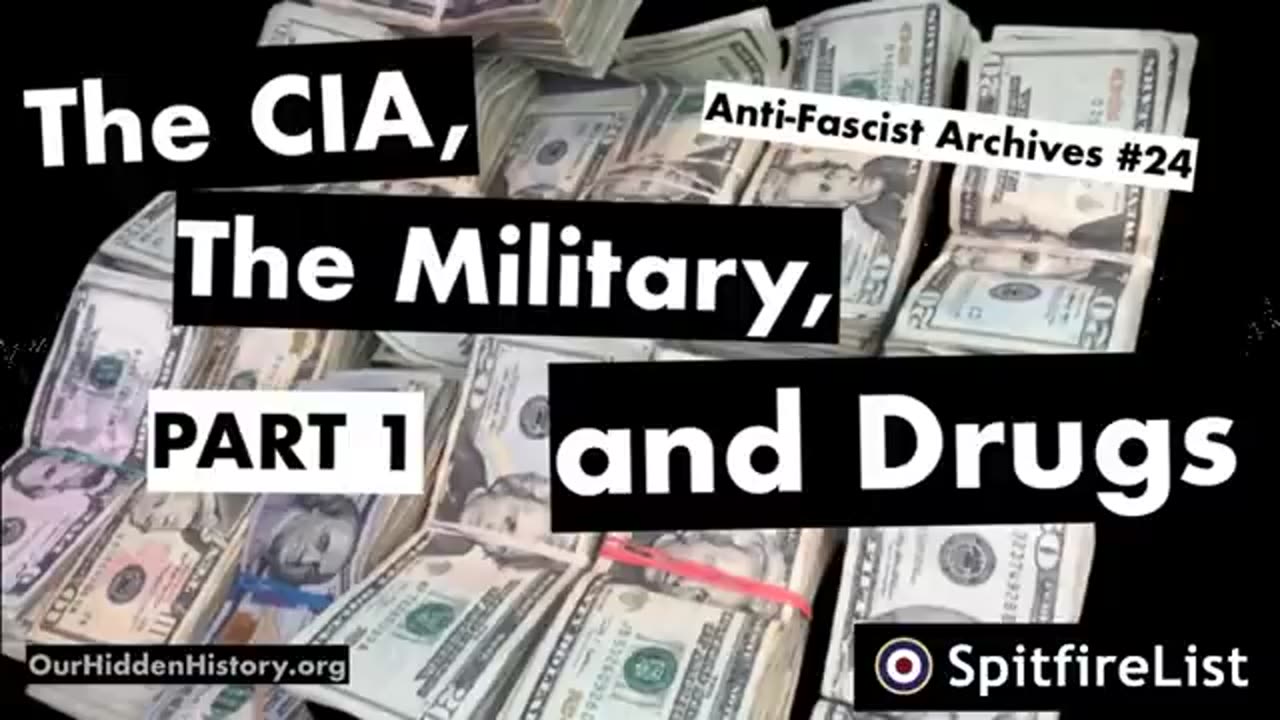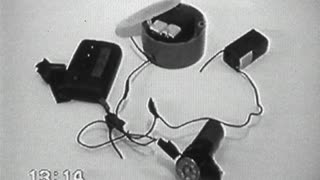Premium Only Content

Dave Emory | Anti-Fascist Archives #24 | The CIA, the Military & Drugs Part 1 of 5 (1986)
ORIGINAL: https://spitfirelist.com/anti-fascist-archives/rfa-24-28-the-cia-the-military-drugs/
AFA-24 [recorded 10/16/86] | The CIA, the Military & Drugs Part I
The first of five AFA shows dealing with the intelligence community and the narcotics trade, this broadcast sets forth much of the history of this relationship. In particular, the program focuses on the role of professional, post World War II anti-communists in the growth of the heroin business.
Beginning with the Bayer company’s development of heroin as a cough-depressant and cure for morphine addiction, the program sets forth the same firm’s invention of methadone, now used to treat heroin addiction. Part of the I.G. Farben chemical firm that served as the backbone of Third Reich industrial production, Bayer (the developer of aspirin) developed methadone as a synthetic opiate for treating casualties prior to World War II. It was originally called Dolophine, in honor of Adolph Hitler!
Next the broadcast analyzes the role of opiates in the China theatre during World War II. Using the Green Gang of Tu Yueh Sheng (Shanghai-based opium traffickers), Ti Li (Chiang Kai Shek’s brutal interior minister) fused political repression with the drug trade. (For more on Chiang’s regime, see AFA-11.) Working with Chiang’s agents, operatives of the OSS (America’s World War intelligence service) grew accustomed to trading opium for hard intelligence, setting the stage for subsequent involvement of elements of U.S. intelligence with the drug trade.
When Chiang’s army succumbed to the communist forces of Mao Tse-Tung, residual elements of the Kuomintang fled to neighboring Indo-China. Receiving arms and financing from the CIA to fight against Mao, the KMT forces used the assistance to corral the Golden Triangle drug traffic instead. In Europe, anti-communist activism also helped to promote the heroin traffic.
Using the Mafia forces of Lucky Luciano against Axis sabotage on the East Coast of the United States and in aiding the Allied landing in Sicily, U.S. intelligence continued the relationship into the post-war era. Using American and Italian mobsters to subdue the vigorous Italian Communist Party, the CIA intelligence turned a blind-eye to the gangsters’ use of heroin refineries and shipping facilities to move drugs into the U.S.
In France as well, the CIA used the Corsican organized crime syndicates to suppress the powerful, communist-influenced dock workers in Marseille. (In addition to blocking munitions shipments to the Indo-China war, French communists wielded real political power in post-war France. As in Italy, the military resistance against Axis armies by the communists won them considerable political support.) As in Italy, the anti-communist efforts of the Corsicans resulted in the U.S. tacitly sanctioning the use of Marseilles as an alternate refining center when the Sicilian and Italian refineries were closed down. This quid pro quo constituted the genesis of the famed “French Connection.”
Next, the broadcast highlights the role of Col. Roger Trinquier (a French officer in the Indo-China war) in developing an opium-for-intelligence infrastructure to combat the influence of Ho Chi Minh’s communists in the early 1950’s. By trading drugs for information, Trinquier was relatively successful in reducing communist activity for a period of time, setting the stage for a revival of the opium traffic as a vehicle for combating communism during the American involvement in Vietnam. The program delineates the role of the South Vietnamese Air Force and the CIA’s Air America proprietary airline in bringing heroin into South Vietnam. While providing capital to conduct the CIA’s “secret” war in Laos, this traffic resulted in an epidemic of heroin addiction among GI’s stationed in Vietnam and, ultimately, added to the flow of the drug into the United States itself.
Program Highlights Include: the role of Nguyen Cao Ky (who ultimately became Vice-President of the short-lived South Vietnamese Republic) in directing the Vietnamese heroin shipments; the involvement of American gangsters associated with the Meyer Lansky syndicate and the French Connection traffic (such as Santos Trafficante) in the Southeast Asian drug trade; Richard Nixon’s role in promoting American funding of a Pepsi-Cola bottling facility that was to evolve into the largest heroin refining facility in Southeast Asia; the involvement of CIA officers Theodore Shackley, Thomas Clines and Lucien Conein in the Southeast Asian intelligence-heroin milieu.
For more related content, please visit:
http://ourhiddenhistory.org/
https://archive.org/details/@altviewstv-fanclub
-
 1:29
1:29
Parapolitics Clips & Docs
10 months agoPBS | Frontline | CLIP: Russian FSB & 1999 Apartment Bombings
197 -
 11:45:14
11:45:14
Right Side Broadcasting Network
9 days agoLIVE REPLAY: TPUSA's America Fest Conference: Day Three - 12/21/24
340K28 -
 12:19
12:19
Tundra Tactical
14 hours ago $12.74 earnedDaniel Penny Beats Charges in NYC Subway Killing
62.8K12 -
 29:53
29:53
MYLUNCHBREAK CHANNEL PAGE
1 day agoUnder The Necropolis - Pt 1
153K52 -
 2:00:10
2:00:10
Bare Knuckle Fighting Championship
3 days agoCountdown to BKFC on DAZN HOLLYWOOD & FREE LIVE FIGHTS!
55.7K3 -
 2:53:01
2:53:01
Jewels Jones Live ®
1 day agoA MAGA-NIFICENT YEAR | A Political Rendezvous - Ep. 103
148K36 -
 29:54
29:54
Michael Franzese
18 hours agoCan Trump accomplish everything he promised? Piers Morgan Article Breakdown
134K57 -
 2:08:19
2:08:19
Tactical Advisor
22 hours agoThe Vault Room Podcast 006 | Farwell 2024 New Plans for 2025
198K11 -
 34:12
34:12
inspirePlay
1 day ago $6.00 earned🏆 The Grid Championship 2024 – Cass Meyer vs. Kelly Rudney | Epic Battle for Long Drive Glory!
95.7K8 -
 17:50
17:50
BlackDiamondGunsandGear
19 hours ago $3.37 earnedTeach Me How to Build an AR-15
69.3K6